“Great achievement is usually born of great sacrifice, and is never the result of selfishness” – Napoleon Hill
Franz Reichelt is not a name that most people would recognize in today’s world, but it is exactly due to great but unselfish sacrifice made by people like him, that the world today has achieved so much level of sophistication in different fields, including the ability to fly and glide, in the sky like a free bird.
Franz Reichelt, who is sometimes also called Francois Reichelt or Frantz Reichelt was born on 16th October 1878 in Wegstadtl in the Kingdom of Bohemia (modern-day Czech Republic). Very little is known about his early life. He moved to Paris in 1898 and finally took the French nationality in 1909. Working in Paris, he started his own tailoring business (serving mostly Austrians visiting Paris), which became quite successful.
The beginning of the 20th century was a great moment as many new inventions were being created all around the world. Perhaps the most remarkable was the Wright Bother’s creation of the first successful aircraft. It was obvious that air travel was here to stay.
However, one thought that troubled aviators and other inventors alike was, what to do if the newly built flying machine stopped working properly in the air? How to ensure the safety & security of people flying in the airplane? As without safety measures in place, all people flying were exposed to grave risk. This gave rise to the demand for the creation of a successful parachute.
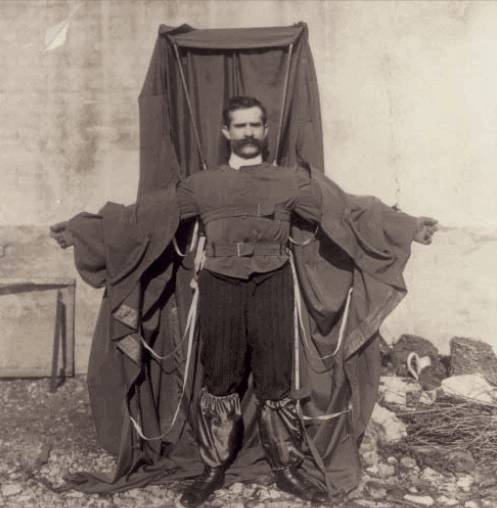
As we have said, Franz Reichelt was really good at his job as a dressmaker, which had made him a decent amount of money. But success has very little to do with money and more to do with personal satisfaction. Franz Reichelt aspired to be something more than just a tailor, he aspired to be the inventor of the world’s first successful parachute which could be used in case of emergency, by people flying in an aircraft. An aspiration which would later give him the sobriquet of – The Flying Tailor.
Surprisingly, man’s fascination for jumping off from great heights with some safety measures in place had been present for a very long time, even much before Franz Reichelt – the Flying Tailor was born. The first description regarding a parachute-like device comes from a story in the book “historical Records” written by Sima Qian at the time of the Western Han Dynasty in China. The plot of the story describes how a legendary emperor escaped death from his murderous father, by jumping off a high structure with only two bamboo hats, (as an old version of a parachute) helping him to glide away to safety.
The quest for creating an ideal parachute had already started in the Renaissance period, with anonymous manuscripts of 15th century showing images of primitive designs of parachutes. Even Leonardo da Vinci in Codex Atlanticus (1485) described his own version of the parachute, which inspired other inventors who came after him. Most notable among these was the Croatian Faust Vrancic, who jumped from a tower in Venice in 1617, wearing a rigid frame parachute.
As time progressed inventors and people taking part in these experiments, became more daring and adventurous. On 26 December 1783 Louise Sebastien Lenormand jumped from the tower of Montpellier observatory using a rigid wooden frame. His reason for creating the parachute was much humbler. He wanted people trapped in a high building to escape safely using the parachute. Two years later the word “parachute” (from para = to avert & chute = fall) was officially coined by him.
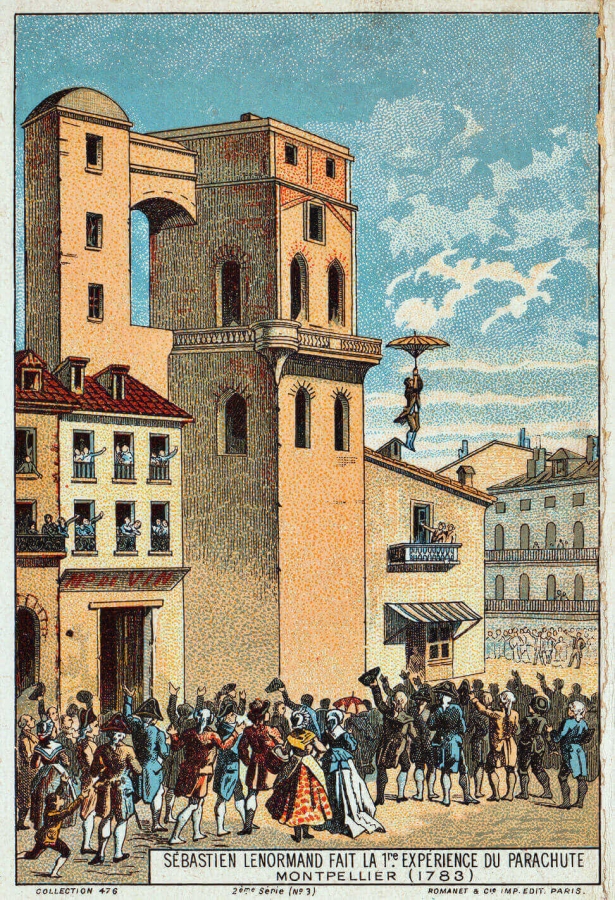
In 1785, Jean Pierre Blanchard dropped a dog in a basket (attached to a parachute) from a balloon high up in the air. In the late 1790s, Blanchard is also credited with creating the first foldable parachute made from silk (till then all parachutes were made with a rigid frame).
In 1797 Andrew Garnerin jumped with a parachute from a hot air balloon. However, this parachute was like a huge umbrella, which was around 30 feet in diameter when opened. This parachute itself was made up of canvas and was attached to a hydrogen balloon. In 1890, Paul Letterman and Kathchen Paulus devised a way to fold the parachute into a knapsack, so that it can be worn on a person’s back.
In spite of different trials being undertaken in different parts of the world, these were the times when any news regarding a new experiment or invention, did not always reach other people working in the same field. The chances of the spread of the information regarding the exact technology used during the procedure were even less. Most importantly, in spite of the above-mentioned advancements, no parachute suitable for jumping from off a plane, at a low altitude, had been devised till then. It was in such a situation that the flying tailor of our story comes into the scenario.
Franz Reichelt began his own experiments to develop a parachute in July 1910. His aim was to build a suit that wouldn’t be too much bulkier than what was normally worn by the aviators of the time. Franz Reichelt started his experiments on dummies, dropping them from the 5th floor attached to foldable silk wings. He found them to touch down softly to the ground.
Franz Reichelt thought he was close to his dream of creating the perfect parachute for jumping from the plane. However, when he tried to create the same version for wearing of humans, suitable for jumping from a plane he faced many practical difficulties, including it being too heavy (6 square meters of material weighed 70 kg). The leading aeronautical organization of the time rejected his parachute design for further testing. Disappointed but refusing to give up, Franz Reichelt decided to conduct experiments on his own – by dropping dummies with parachutes from top of a building.
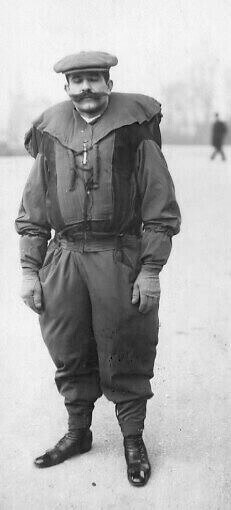
Franz Reichelt received a new incentive for trying to create a better version of his parachute when in 1911, Colonel Lalance of the prestigious Aero Club de France offered 10,000 francs to anyone who would build a practically applicable safe parachute for aviators. The terms were very clear cut – a parachute weighing not more than 25 kilograms had to be built within 3 years which can be used by aviators in real life, without any difficulty.
Franz Reichelt modified his parachute design still more, till the surface area had increased to 12 square meters while reducing the weight. Franz Reichelt would go on to make a couple of jumps (from a height around 8 meters) in different places to try the efficiency of the parachute, wearing it himself. This also left him injured on a few occasions.
He finally came to the conclusion that it was a short drop distance that was responsible for his failure. So instead of aborting his plans he just decided that he needed a higher place, from where he could jump so that the parachute could work. He finally zeroed in on the Eiffel Tower, as the best place suitable for his jump.
It took Franz Reichelt a lot of time before he could finally get the permission to make the jump from Eiffel Tower, which he decided to do in February 1912. On the 4th of February 1912, he reached Eiffel Tower, wearing the parachute suit that he had created. The suit that Franz Reichelt was wearing was quite an improvement over his earlier versions.
The parachute of Franz Reichelt instead of being attached to an overhead canopy was integrated into the flight suit itself. The parachute was not much voluminous compared to normal clothing & did not hamper the wearer’s movement. It was supposed to open by the wearer extending his arms & forming a cross with the body. The newspapers of the time estimated that the parachute would have a weight not exceeding 9 kilograms and surface area of around 32 square meters.
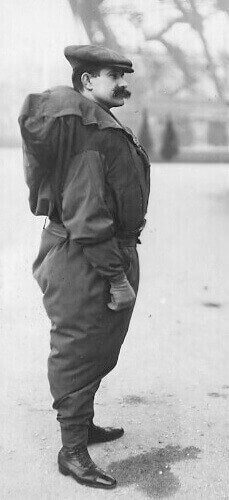
The permission for the parachute trial from Eiffel Tower was given to Franz Reichelt by the police authorities of Paris, with the understanding that he would use dummies for his experiments. In other words, it meant a mannequin wearing the suit would be dropped from Eiffel Tower. But when Franz Reichelt reached Eiffel Tower, he himself was suited up for the jump. This quite surprised the authorities, people & even friends of Franz Reichelt, present at the site.
The sudden change of plan had confused everyone. The flying tailor’s friends tried to persuade him to use dummies for the trial. When they found that they could not stop Franz Reichelt from changing his mind, they tried to postpone the event by citing the strong winds, as a dangerous security concern. However, the flying tailor had made up his mind to fly down (or glide down) from the Eiffel tower and nothing in the world could change his resolve.
Franz Reichelt was absolutely sure that his parachute would work & he did not want to delay any further, his position among legends who had inspired him. The Flying Tailor believed that the drop from the first platform was absolutely safe. Although a guard tried to stop Franz Reichelt from climbing further but after a bit of argument, Franz Reichelt was allowed to proceed upwards along with 2 of his friends and a cinematographer.
At 8.22 am on 4th February 1912, Franz Reichelt jumped from the Eiffel Tower’s first deck, which was just 57 meters above the ground. Apparently, he was calm and smiled before he jumped from the tower. Tragically, the parachute instead of opening properly, folded around Franz Reichelt as he plunged down to disaster.
Franz Reichelt was mortally wounded by the fall, as his body hit the ground. His skull & spine were shattered, he was having profuse bleeding from his ear, nose, and throat & his right leg and right arm were crushed. Franz Reichelt had died a painful & perhaps a futile death; as a crowd of stunned onlookers grappled with the tragic reality of the death of the flying tailor.
The day after Franz Reichelt died, almost all the famous Newspapers of the time, carried his story. The images of the fatal jump which including a short video film of the event, were also circulated in the media. The opinions carried by the newspapers were varied. Most described him as – reckless, mad, irresponsible, foolish & some others as a genius.
The authorities too on their part due to all the negative publicity upon them refused to give any further permission for parachute trial by people planning to jump from the Eiffel Tower. However, the trials using dummies were allowed. However, the story of the flying tailor has since then figured in news, images in media, books & even in a short film; in different forms since the tragic accident a century back.
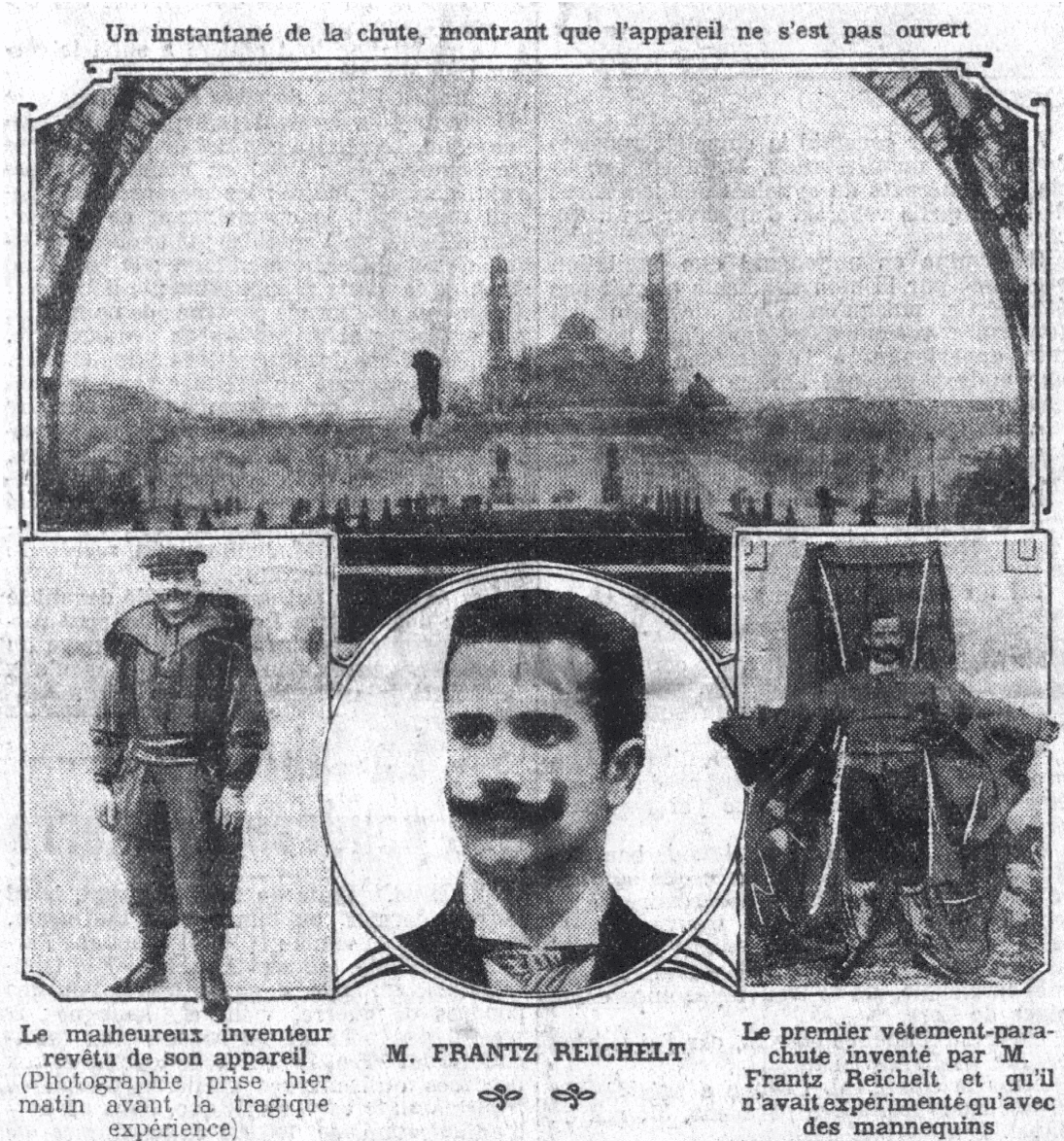
When Franz Reichelt had begun his trial for creating a parachute ideal for jumping off from airplanes, there was no satisfactory solution for the same. However, by the time he died a successful parachute jump from a plane had already taken place in the United States of America.
In the modern world, Franz Reichelt’s endeavors may appear to be very foolish and short-sighted. However, had he succeeded in his endeavor, the perception of people about him would have also changed. Sometimes the difference between a genius and a fool depends only on the results they produce and not on their methods.
Finally. we cannot forget that the progress of human society from the stone age to the modern age, has been achieved only due to the unbelievable courage of some so-called crazy people. The Flying Tailor’s name even if not known to many people in the world, would certainly figure in that list of people – who dared to dream an impossible dream & paid the ultimate price for it.